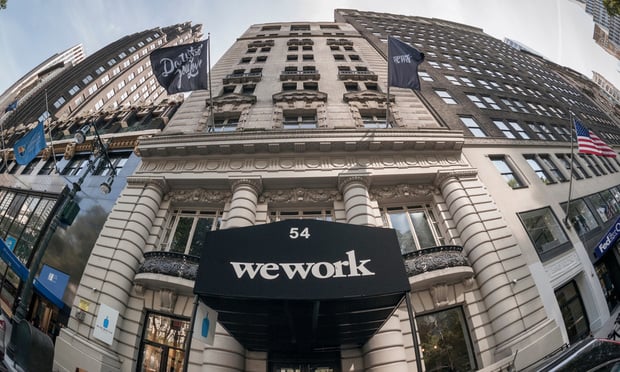Products You May Like
WeWork’s network is vast. The company has more than 500 locations in 87 cities, across 23 countries. In the US, the firm controls 15.7% of coworking space, according to Constantine Valhouli, co-founder and director of Research at NeighborhoodX.
But in some markets, that number is much higher.
In New York, WeWork controls 56% of the coworking market and, in Boston, it has 28.4% of the segment. Overall, it controls 1.5 million of the 160 million square feet of Boston office space in the market, according to NeighborhoodX.
On the other side of the country, in San Francisco, WeWork controls almost 50% of three million square feet of co-working office space (which is 3.5% of the total office market), according to NeighborhoodX.
With WeWork’s recent woes, Valhouli expects it to scale down in some of these markets. “It’s on a building-by-building basis, as some locations will be more promising either because of prime locations or long-term, below-market leases,” he says. “But I’d expect portfolio rationalization of underperforming locations. WeWork may emerge with a smaller footprint but as a more profitable company.”
The question is what will the impact of a WeWork pullback be in these markets? While Valhouli says the company is the largest office tenant in some cities, including Boston, its total amount of space is just 1 to 3% of the overall office market. “In other words, these are highly-fragmented markets—and it is that fragmentation that makes them healthy and resilient markets,” Valhouli says.
If WeWork does pullback, it will have an impact. Valhouli compares it to New York City after the financial crisis when a significant amount of office space was made redundant after a number of financial institutions folded or scaled back. “This had a modest downward pressure on rents and asset valuations, but it was for a relatively short horizon,” he says. “The cities where WeWork has a significant presence, such as New York and San Francisco, are inherently dynamic and resilient. The excess inventory will likely be absorbed by competitors or renegotiated by major institutional tenants formerly of WeWork, now looking to contract directly with the landlord.”
WeWork’s large concentration in these major cities is due to a number of factors, according to Valhouli. “Real estate prices are a factor, but lease structures are even more critical,” he says. “These are the cities driven by dynamic tech and biotech startups where there was a long-term mismatch between the needs of landlords [long-term leases and predictable cash flow] and tenants who may need to constantly scale up their space needs as their firms grow—or else fold quickly when things don’t go well.”
Valhouli sees other coworking contenders coming in to pick up space, but he thinks it will vary by market. “If Regus were ever to take a few design and marketing cues from WeWork [their core ideas were good, except for the megalomania] they could become a compelling substitute for WeWork,” he says. “But right now, their buildings can feel a bit dated and sleepy in some markets.”
